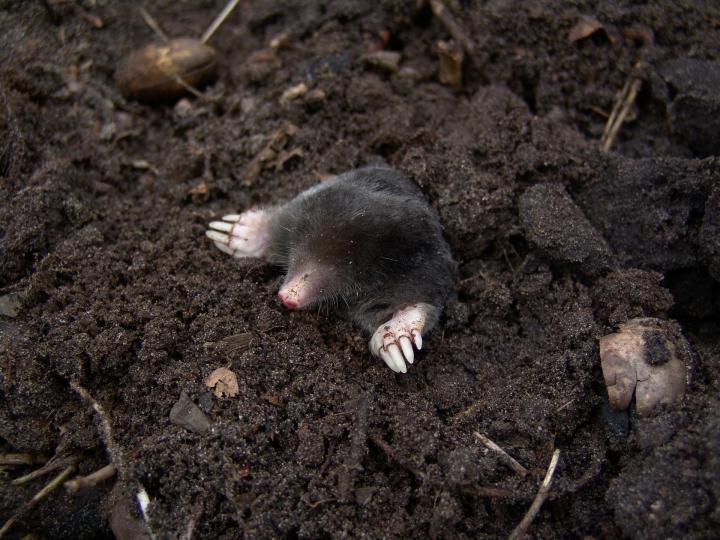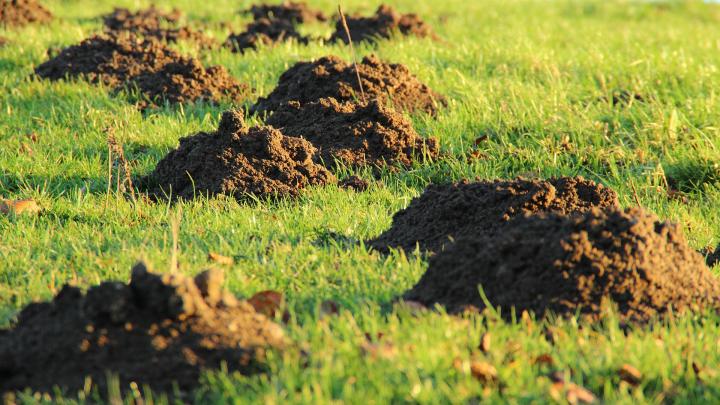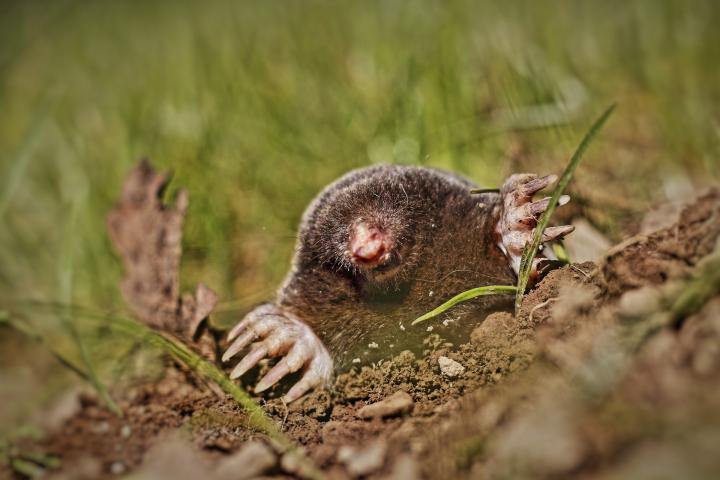
Here are tips on how to identify and get rid of moles in the garden or yard.
What Are Moles?
Moles are ground–dwelling carnivores that prefer to eat insects instead of your garden plants. However, their underground tunnels can ruin your garden and lawn and make an easy access to your plants for other rodents.
If you have a significant invasion of moles or similar pests, it may be a sign of trouble. Moles are usually found where soil is rich in organic matter. Their presence in unusually large numbers might be due to a high population of soil pests. It therefore serves as a warning that all is not well with the soil life.
Identification
How to Identify Moles in your Garden
Moles are surprising little mammals with pointed muzzles, tiny eyes, and bodies shaped like Idaho potatoes. In motion they actually swim along underground, using wide front flippers to part the soil as they go. They prefer moist, loamy soil and are most active in the early morning or evening in the spring or fall; they also come out after a warm rain.
Moles have the distinguishing characteristic of a hairless, pointed snout. Their small eyes and ear canals are concealed by fur, and they do not have external ears. They have very large and broad forefeet with webbed toes. Their hind feet or more narrow and have slender claws. They are usually about 7 inches in length and weigh about 4 pounds.
Mole Damage
- Moles usually feed on insect pests, grubs, and soil organisms, including beneficial ones like earthworms.
- Unlike vegetarian voles, moles dig deep. Their tunnels are usually at least ten inches underground, unless they’re scanning the surface in search of a mate. Check your soil and lawn for their tunnels. They will look like raised volcano-shaped swellings in your yard.
- Surface tunnels or ridges also indicate mole activity.

Control and Prevention
How to Get Rid of Moles
- Sprinkling dried blood, tobacco or a similar repellent on the ground is effective. Remember to re-apply after a rain.
- Owning a cat that enjoys walking through your flower beds is a very effective deterrent to rodents.
- Moles are carnivores that make themselves at home in lawns rich in grubs and insects. When their food is seasoned with castor oil, they will go elsewhere for meals. (Wouldn’t you?) Mix up a spray of 3 parts castor oil to 1 part dish detergent; use 4 tablespoons of this concoction in a gallon of water, and soak the tunnels and the entrances.
- Dip an ear of corn in roofing tar and place it in one of their tunnels. Moles hate the smell of tar, and you’ll block their escape.
- Try sprinkling powdered red pepper in their tunnel entrances.
- Sprinkle coffee grounds on the soil to keep moles from tunneling.
- You may have luck using wind power—setting up vibrations in the ground that will bother moles and send them away. Low-tech methods include kids’ pinwheels placed here and there on the lawn, or a homemade thumper: Cut fins in the sides of a bleach bottle and place it on a stick driven into the ground near a mole entrance.
- If you have a persistent mole problem, the best solution is trapping. Frankly, this is often the only way to get rid of moles. Use a humane trap, and release the moles at least 5 miles from your home in a rural area away from someone else’s garden.

Prevent Moles
- Check out your soil for the presence of pests; if you have a lot of moles, you probably have an oversupply of grubs and bugs. Try spraying your lawns with milky spore disease or beneficial nematodes to get rid of the grubs. This will also rid your lawn of Japanese beetle larvae, which is a great benefit!
- If you want to protect specific plants, dig a 2- to 3-foot hole and line the sides and bottom of the hole with wire mesh. Fill the hole with soil and plant.
- Where you are determined to try bulbs, make a small “cage” of ½-inch mesh screen. Place several bulbs inside, root plate down and bury the entire cage at the proper depth. Rodents won’t be able to chew through, but roots and stems can grow out. Note: moles are often blamed for the damaged caused by field mice.
Learn more about moles and what they do in your yard. Do you have comments or questions about moles? Let us know below!








